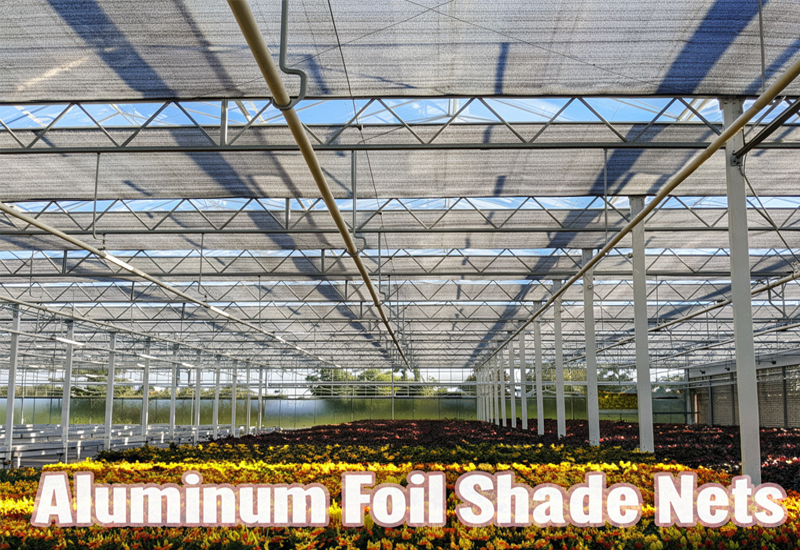Introduction
As heat waves and rising cooling demand reshape building design priorities, exterior sun-shading has moved from optional add-on to practical necessity. This article explains why exterior shading outperforms interior shading, the design rules that make it effective, its functional advantages (thermal, acoustic, weather, security and insect control), common system types, and real-world energy-impact data you can use in design or specification.
Why Exterior Shading Outperforms Interior Shading
Interior blinds or curtains only intercept some solar radiation after it has already passed the building envelope; absorbed energy still becomes indoor heat and increases cooling load. Exterior shading, placed before the glazing, prevents most solar radiation from ever reaching the window.

Key outcomes:
● Blocks 60–80% of solar heat before it hits the glass.
● Lowers indoor temperatures by ~7–8°C under direct sun in many climates.
● Reduces cooling energy demand because less heat enters the conditioned space.
Primary reasons:
1. Heat interception — exterior devices stop radiation at source rather than letting glass absorb and re-radiate it.
2. Materials and reflectivity — aluminum louvers and high-performance fabrics reflect or dissipate UV/IR before transmission.
Design Principles: Orientation, Form and Integration
Good shading starts with context. Apply simple rules to maximize performance without sacrificing architecture:
By Orientation
South-facing façades: Use fixed horizontal shading (overhangs, horizontal louvers) to block high summer sun while admitting winter sun when appropriate.
East/West façades: Use adjustable or retractable shading (vertical fins, retractable awnings) to manage low-angle morning/evening sun.
Architectural Integration
Integrate shading into building elements (extended eaves, balconies, façade louvers).
Use vegetation and green façades for low-rise buildings where appropriate.
Maintain an air gap between shading device and glazing for thermal buffering.
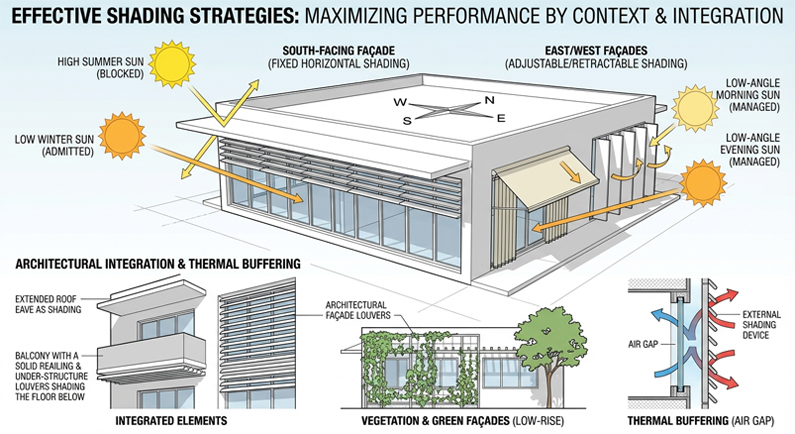
Functional Advantages of Exterior Shading Systems
1. Thermal Performance & Energy Savings
● Exterior shading can lower HVAC loads significantly — at least 40% reduction in heating/cooling energy in optimized cases when combined with improved envelope details.
● Windows typically are the weakest thermal element (U ≈ 3 W/m²·K vs walls ≈ 0.5 W/m²·K); shading improves effective performance by reducing incident solar gains.
Critical details:
● Tight sealing of shading panels and insulated air layer between shading and glass maximize effectiveness.
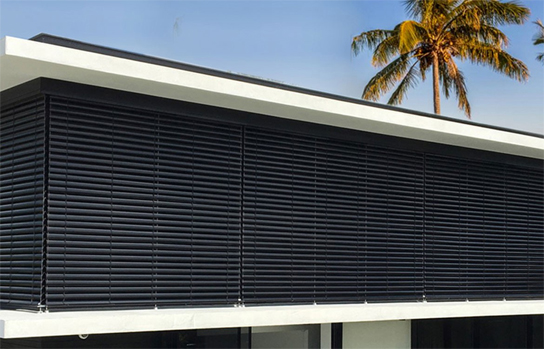
2. Acoustic Benefits
● Standalone exterior shading can cut external noise by ~18 dB.
● When combined with double-glazed windows, overall reduction can reach ~37 dB.
● Success factors: sealed guide rails, anti-vibration mounts, and elimination of “sound bridges.”
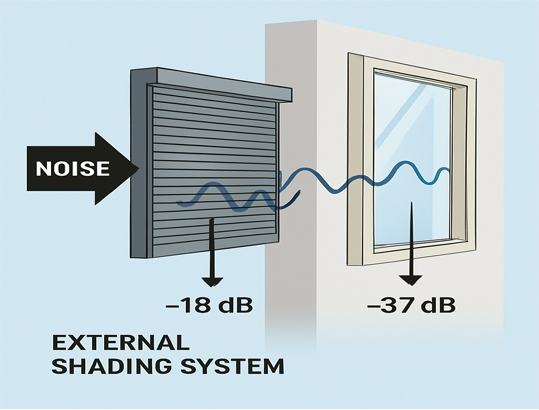
3. Solar Control & Light Management
● High-performance exterior materials reflect >90% of UV/IR radiation.
● Perforated or adjustable screens allow controlled daylighting while restricting glare.
4. Weather Resistance & Durability
● Engineered systems withstand wind loads (up to 120 km/h in high-grade designs), snow and heavy rain.
● Material selection and mechanical fixings determine long-term resilience.
5. Security & Safety
● Reinforced laminated slats (e.g., dual aluminum + PU fill), locked guide rails and embedded mounting greatly increase forced-entry resistance.
● Exterior shading can function as an extra security layer integrated with building openings.
6. Privacy & Insect Protection
● Fully closed exterior screens replace curtains for visual privacy.
● Tight-mesh options provide insect control, removing the need for separate insect netting in many applications.
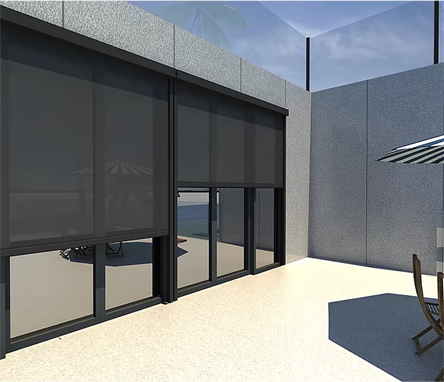
Common Exterior Shading Types
● Retractable awnings — flexible, user-controlled sun protection for façades and balconies.
● Folding canopy systems — large-span shading for terraces and commercial façades.
● Track-guided exterior blinds — robust, wind-resistant shading for vertical surfaces.
● Pivoting or articulated louvers — allow precise solar angle control and daylighting modulation.
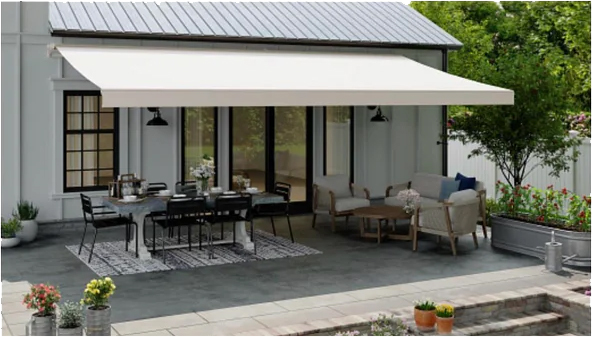
Data Insight & Why It Matters
Industry findings indicate exterior shading reduces air-conditioning energy by ~25–30% (reference: ASHRAE 2023 data). That magnitude of savings makes exterior shading a foundational strategy for net-zero-energy and low-carbon building targets.
Practical Specification Checklist
Determine dominant solar exposures (south/east/west).
Choose material based on climate: aluminum or coated metal for durability/coastal resistance; high-performance PE/technical fabrics for cost-effective, UV-resistant solutions.
Specify wind and snow load ratings and locking mechanisms.
Verify acoustic sealing if noise reduction is a project requirement.
Design for maintainability: accessible tracks, replaceable fabrics/slats.
Conclusion
Exterior shading is not just an architectural choice — it is a multi-functional system that improves thermal comfort, reduces energy demand, adds security, lowers noise, and can replace multiple separate systems (curtains + insect screens). For sustainable buildings seeking real, measurable performance improvements, exterior sun-shading is among the most cost-effective and immediate strategies available in 2025.


